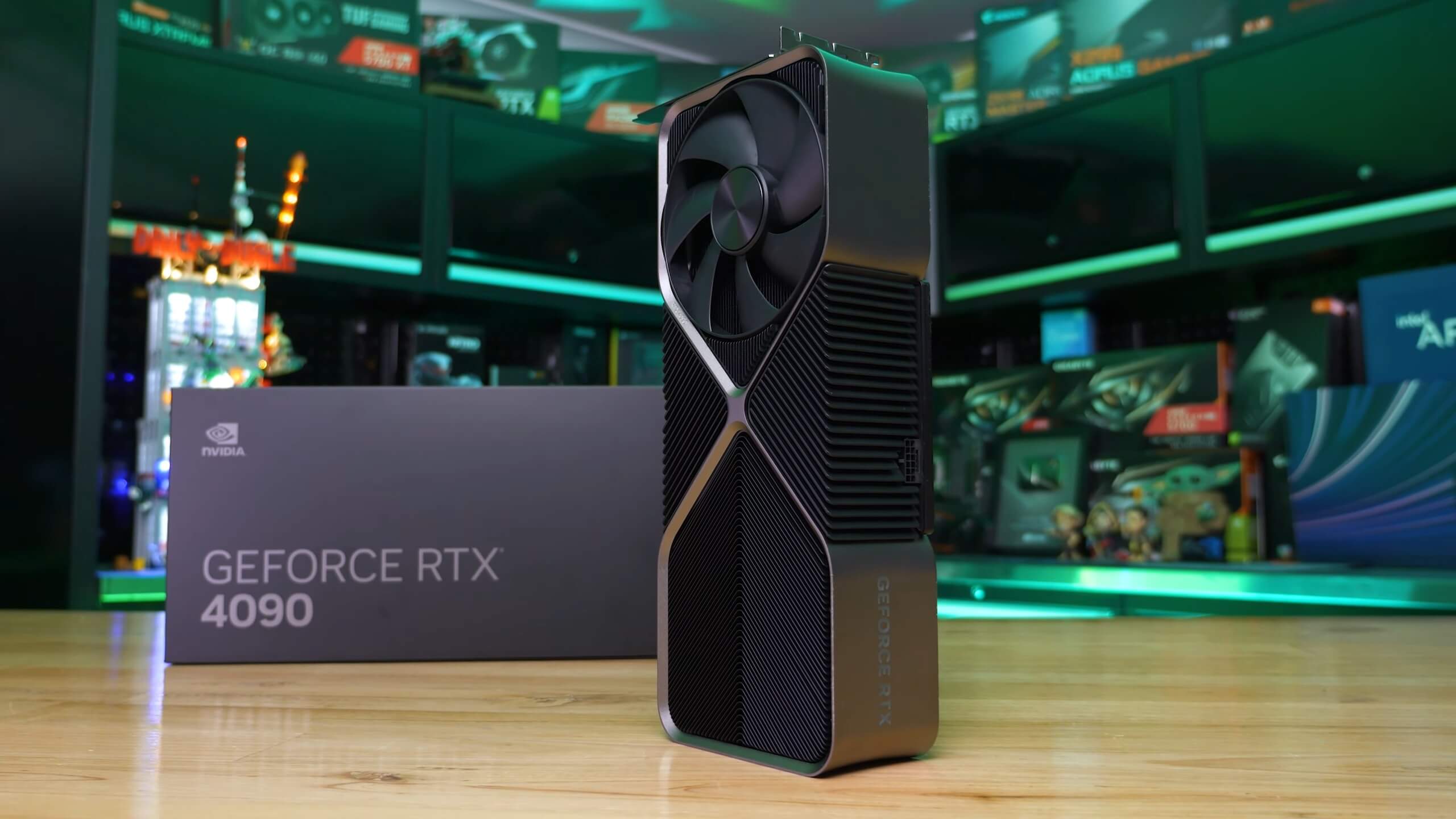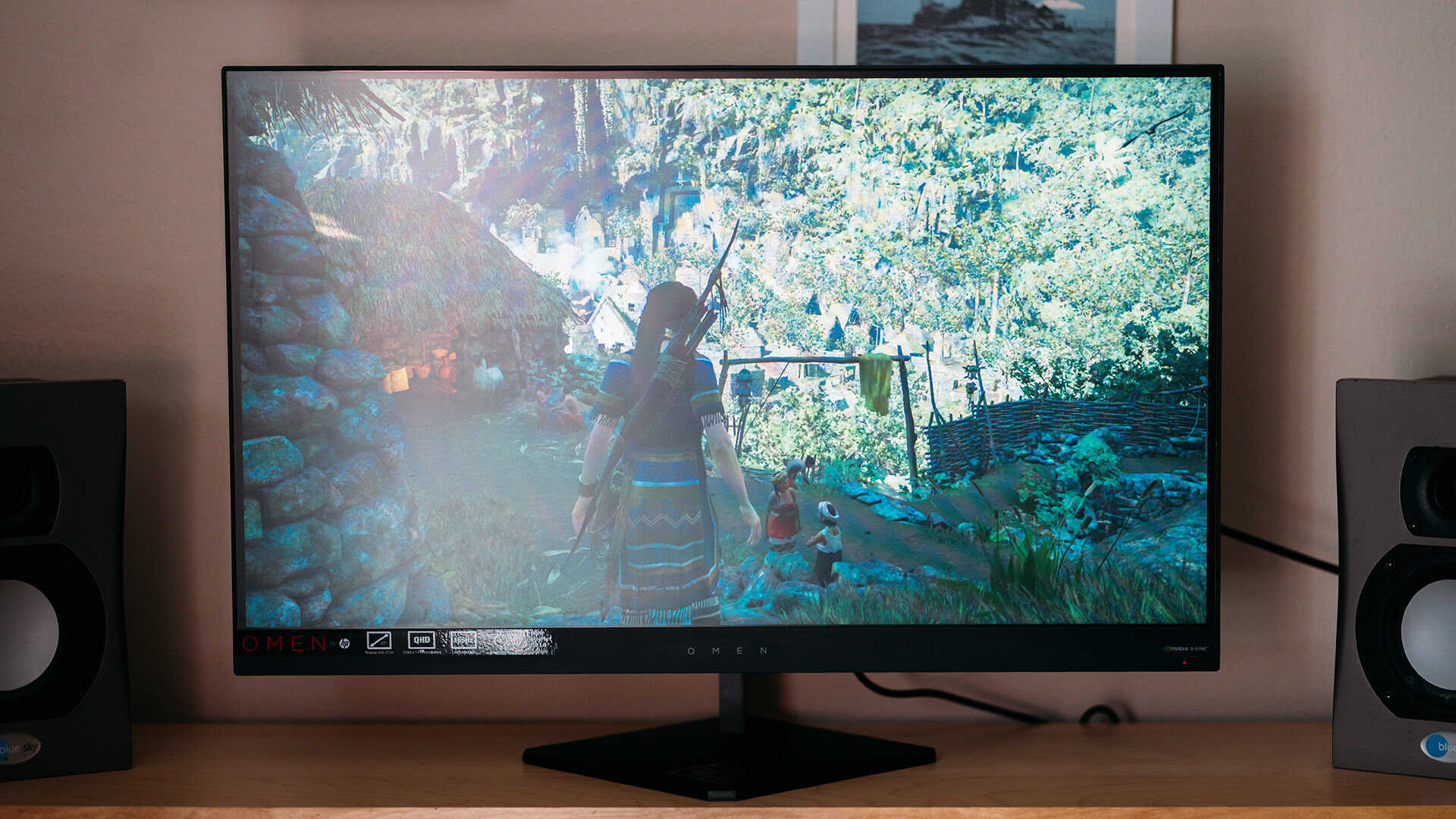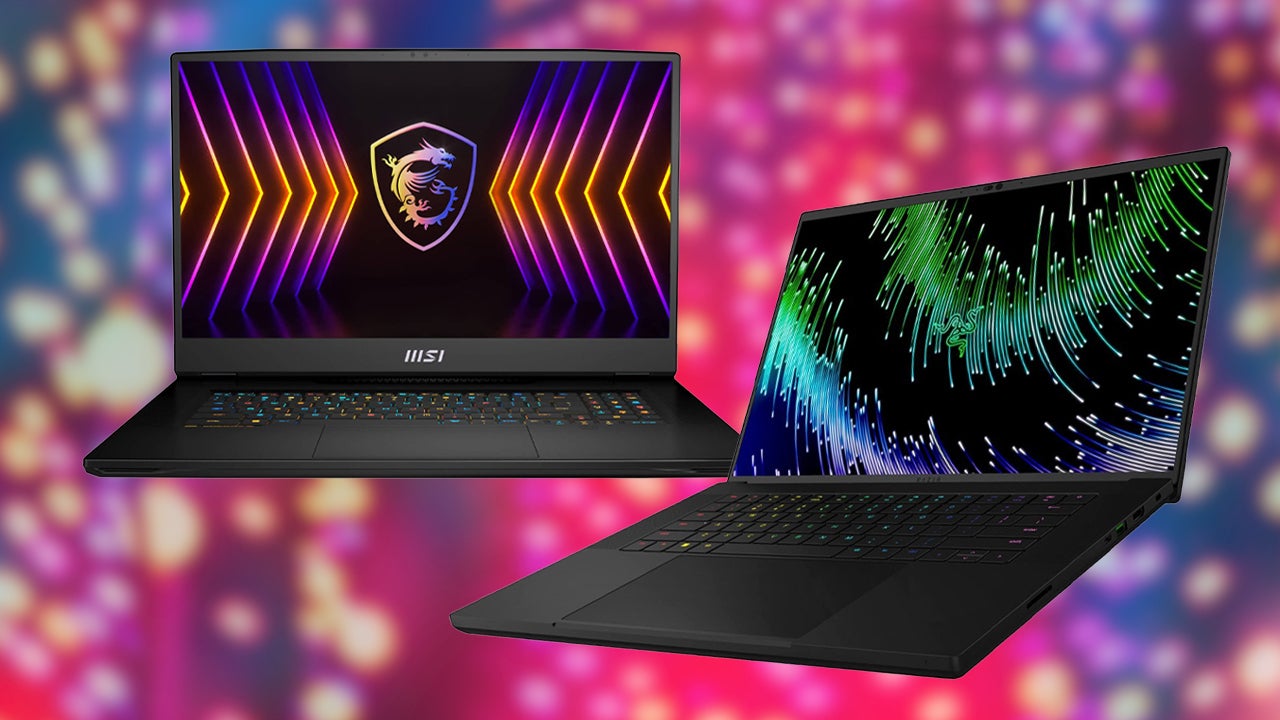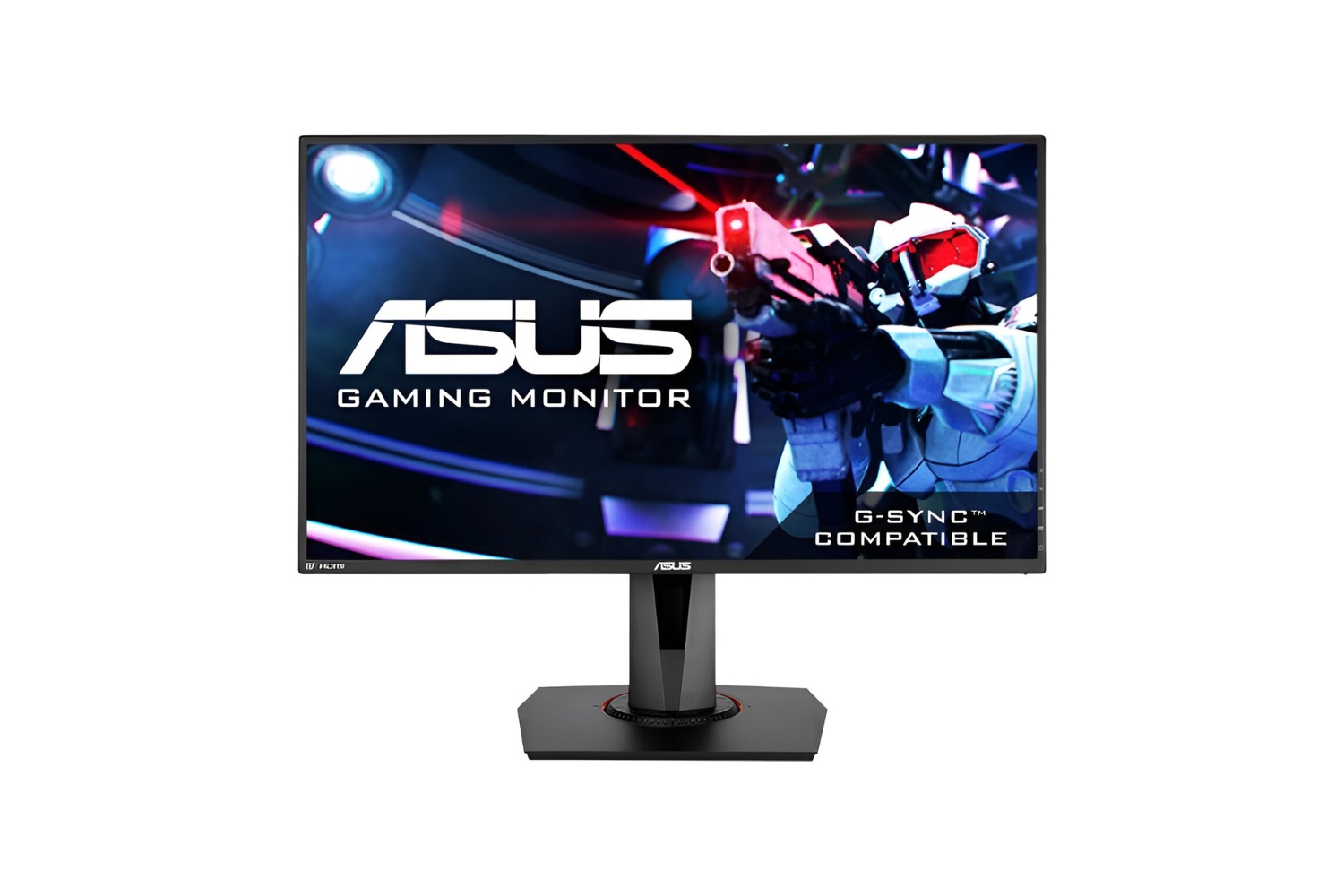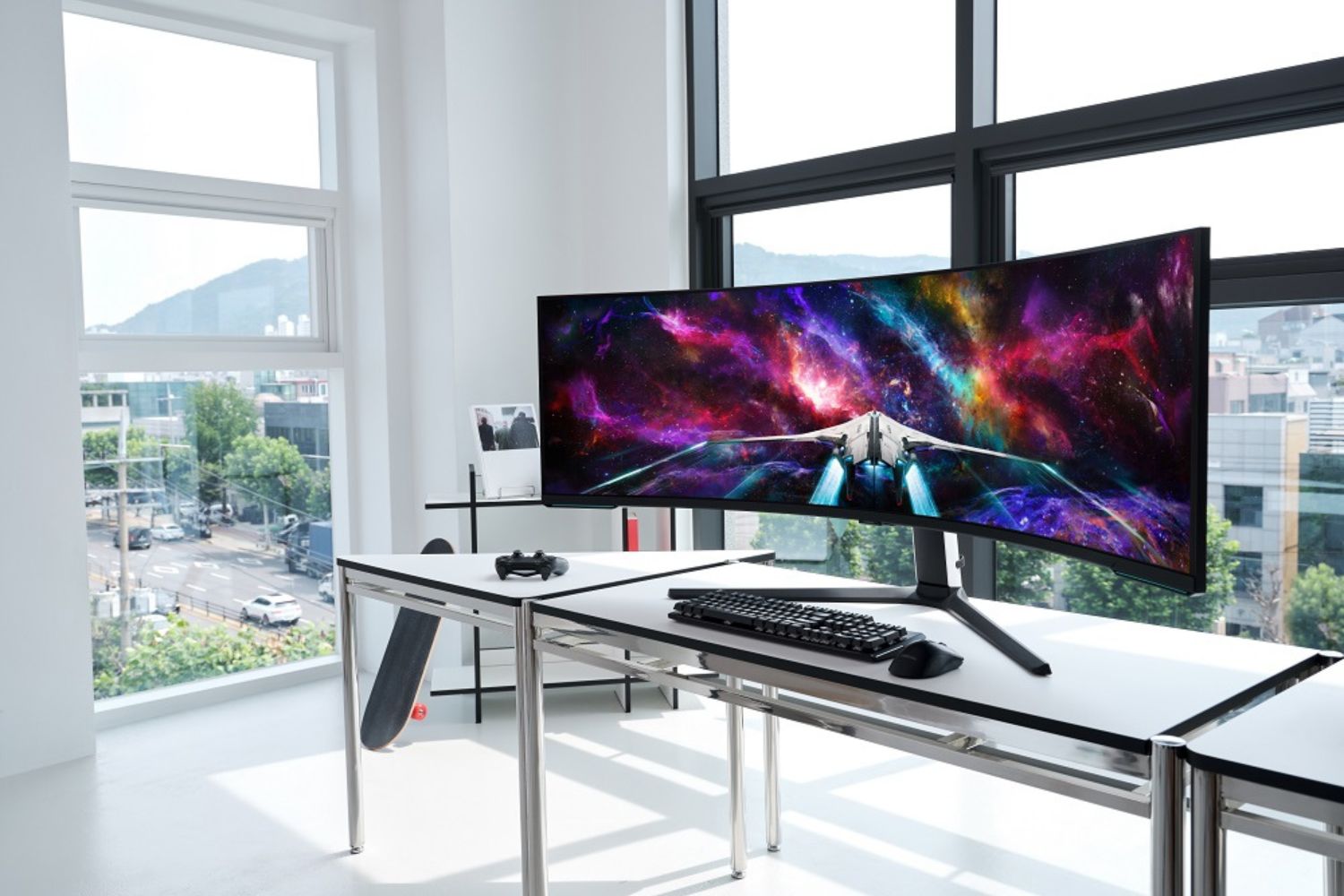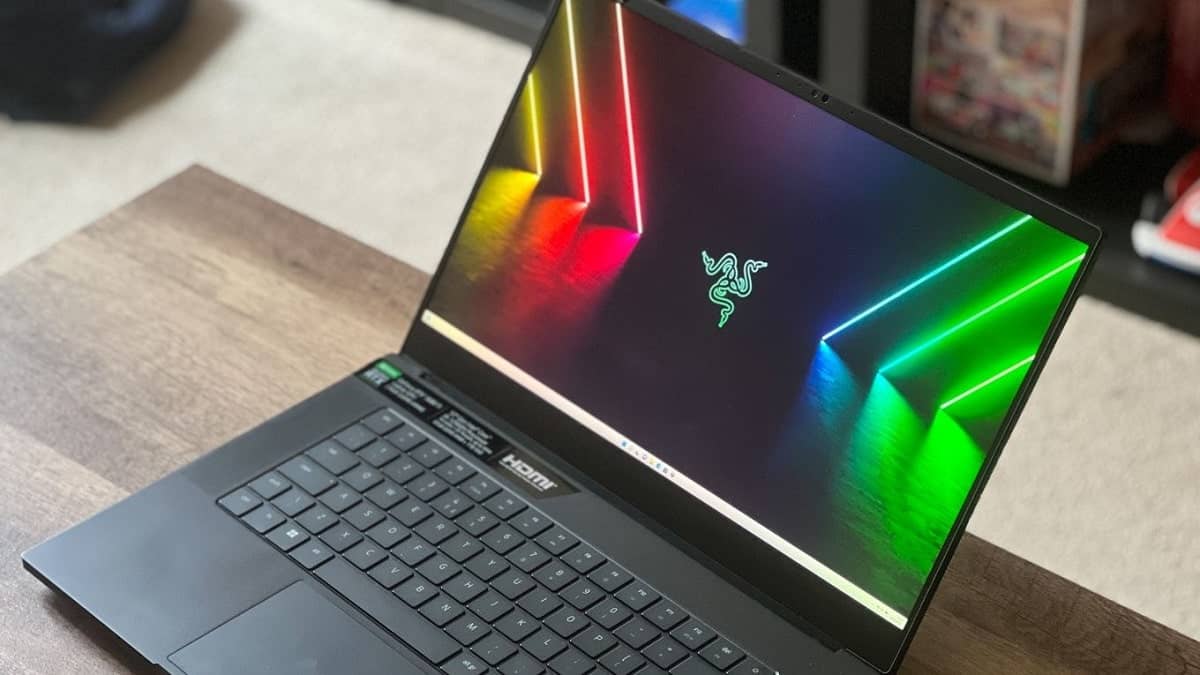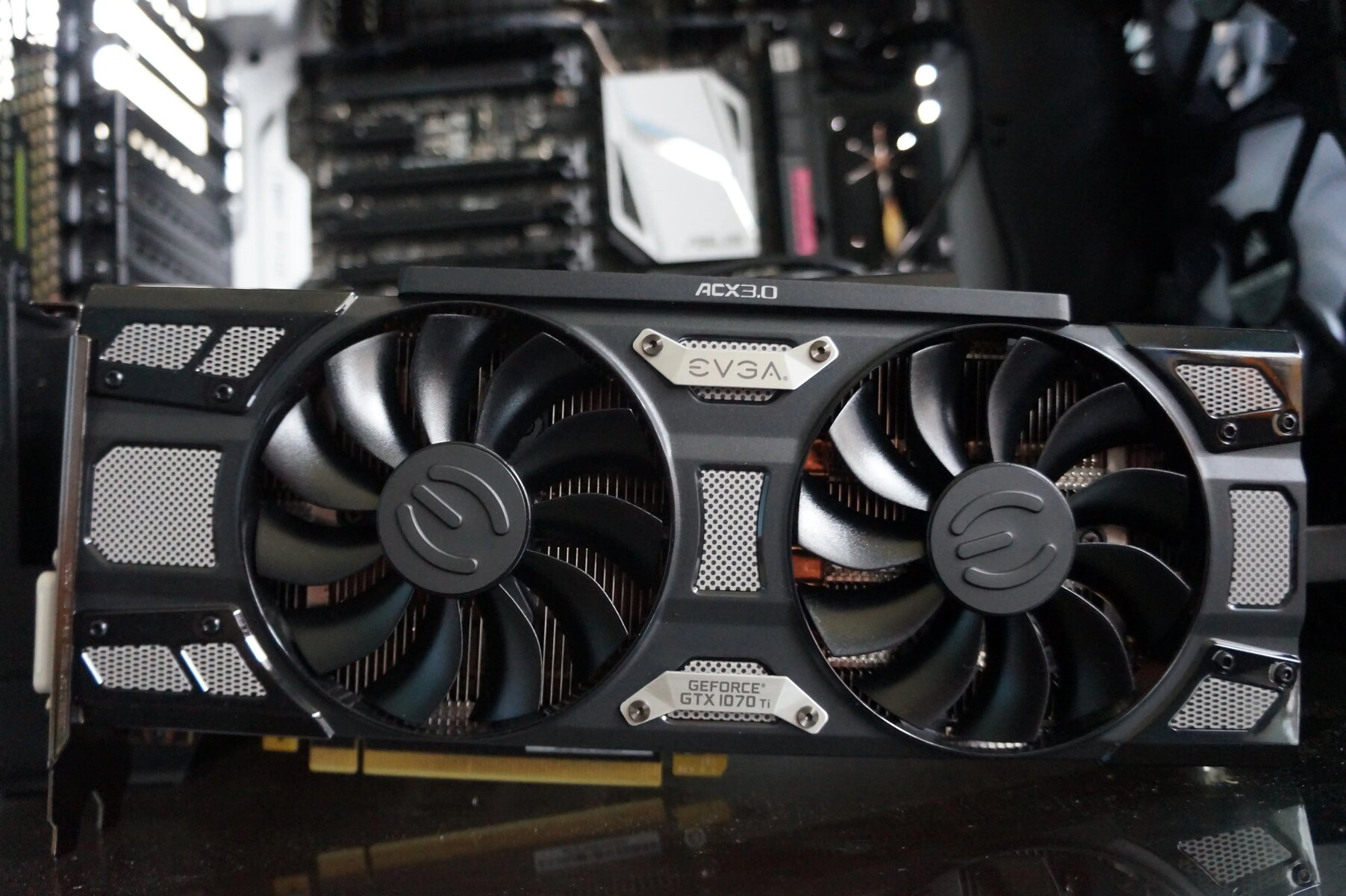Introduction
Welcome to the world of 4K gaming, where stunning visuals and unparalleled detail bring your gaming experience to a whole new level. But before you embark on this visual adventure, it’s crucial to understand the role of a graphics card in achieving the optimal 4K gaming experience. In this article, we will delve into the specifics of what kind of graphics card you need for 4K gaming and explore the factors that you should consider when making your selection.
4K resolution, also known as Ultra HD, refers to a display resolution of approximately 3840 x 2160 pixels. This means that there are a staggering 8.3 million pixels on the screen, resulting in incredibly sharp and lifelike visuals. Compared to traditional Full HD resolution, 4K offers more than four times the number of pixels, providing an immersive and realistic gaming experience.
To fully harness the power of 4K gaming, a robust and capable graphics card is essential. The graphics card is responsible for rendering the images and graphics that you see on your monitor, and in the case of 4K gaming, it needs to work extra hard to handle the increased resolution and graphical demands.
When it comes to choosing the right graphics card for 4K gaming, there are several important factors to consider. These include the GPU, VRAM, power consumption, and cooling capabilities of the card. By understanding these factors and their impact on performance, you can make an informed decision and ensure a smooth and enjoyable 4K gaming experience.
In the following sections, we will explore the minimum requirements for a graphics card to handle 4K gaming, as well as some mid-range and high-end options that offer optimal performance. Whether you’re a casual gamer or a hardcore enthusiast, there’s a graphics card out there that will meet your needs and take your gaming visuals to the next level.
What Does 4K Resolution Mean?
4K resolution, also known as Ultra HD, refers to a display resolution that provides a level of detail and clarity that surpasses traditional Full HD resolutions. With approximately 8.3 million pixels on the screen, 4K offers a significantly higher pixel density, resulting in sharper, more lifelike images.
To put it into perspective, while a Full HD (1920 x 1080) display has a total of 2.07 million pixels, a 4K (3840 x 2160) display quadruples that number, providing a more immersive and detailed visual experience. The increase in pixel density in 4K resolution enhances image quality, making everything from textures to fine details much crisper and more defined.
With 4K, you can enjoy an incredibly immersive gaming experience, as well as visually stunning movies and multimedia content. It allows you to see more subtle details in games, such as intricate textures, realistic lighting effects, and smooth animations. Additionally, in movies and videos, 4K enhances the depth and clarity of the images, making you feel as if you’re right in the middle of the action.
It’s important to note that to fully benefit from 4K resolution, you need a display that supports it. This includes 4K monitors, televisions, and projectors. Without a compatible display, you won’t be able to experience the enhanced visual quality that 4K provides. Therefore, before investing in a graphics card for 4K gaming, make sure that your display device supports 4K resolutions.
Overall, 4K resolution offers a significant improvement in visual quality and immersion compared to lower resolutions. With its increased pixel density and sharper details, 4K resolution delivers a more lifelike and captivating visual experience that will elevate your gaming, movie-watching, and multimedia consumption to new heights.
Why Do You Need a Graphics Card for 4K?
4K gaming requires a powerful graphics card to handle the demanding processing and rendering tasks necessary to deliver smooth and visually stunning gameplay. Without a dedicated graphics card, the integrated graphics on most CPUs will struggle to provide the necessary performance and capabilities needed for a seamless 4K gaming experience.
One of the primary reasons you need a graphics card for 4K gaming is the increased resolution. A 4K display has four times the number of pixels as a Full HD display, which means that the graphics card needs to render and display a significantly larger amount of visual information. Every frame in a game consists of millions of pixels, and to render these frames at a high resolution and maintain a high frame rate, a powerful graphics card is required.
In addition to the increased pixel count, 4K gaming often demands more advanced graphical effects, such as higher-quality textures, dynamic lighting, and realistic shadows. These effects require a graphics card with a substantial amount of graphical processing power to handle the complex calculations and render them accurately in real-time.
Furthermore, a dedicated graphics card comes with its own dedicated video RAM (VRAM). VRAM is crucial for storing and quickly accessing the textures, shaders, and other graphical assets that are needed to render the game’s visuals. With 4K gaming, the higher resolution and more detailed textures require a larger amount of VRAM to ensure smooth gameplay and avoid stuttering or frame drops.
Heat management is another important aspect when it comes to 4K gaming. The intense processing demands of 4K gaming can generate significant heat, which can negatively impact the performance and lifespan of the graphics card. Dedicated graphics cards are equipped with efficient cooling mechanisms, such as fans or liquid cooling, to dissipate heat and maintain optimal temperatures during extended gaming sessions.
Overall, a graphics card is essential for 4K gaming due to the increased resolution, advanced graphical effects, the need for ample VRAM, and efficient heat management. It provides the necessary power and capabilities to deliver smooth and visually stunning gameplay at this high resolution. Investing in a quality graphics card specifically designed for 4K gaming will ensure that you can fully enjoy the immersive and detailed visuals that 4K resolution has to offer.
Important Factors to Consider
Choosing the right graphics card for 4K gaming requires careful consideration of several key factors. These factors will determine the performance, compatibility, and overall experience you can expect from your graphics card. Here are the important factors to keep in mind:
1. GPU (Graphics Processing Unit): The GPU is the heart of the graphics card and determines its performance. Look for a graphics card with a powerful and modern GPU specifically designed for 4K gaming. Popular choices include NVIDIA GeForce RTX series and AMD Radeon RX series.
2. VRAM (Video Random Access Memory): VRAM is essential for storing and quickly accessing the graphical assets required for rendering game visuals. For 4K gaming, a graphics card with a minimum of 8GB VRAM is recommended to accommodate the higher resolution and detailed textures.
3. Power Consumption: Consider the power requirements of the graphics card and ensure that your power supply unit (PSU) can handle the load. High-end graphics cards may require additional power connectors and higher wattage PSUs for optimal performance.
4. Cooling: The graphics card’s cooling system plays a crucial role in maintaining optimal temperatures during intense gaming sessions. Look for a card with efficient cooling solutions, such as dual fans or liquid cooling, to prevent overheating and ensure long-term reliability.
5. Compatibility: Check the compatibility of the graphics card with your system’s motherboard, available PCIe slots, and operating system. Ensure that your motherboard supports the necessary PCIe version (e.g., PCIe 3.0 or PCIe 4.0) and that the card’s physical dimensions fit within your system’s chassis.
6. Connectivity: Consider the connectivity options offered by the graphics card, including the number and types of display outputs. Ensure that the card has the necessary ports to connect your 4K display, such as HDMI 2.1 or DisplayPort 1.4, to fully utilize its capabilities.
7. Budget: Set a budget for your graphics card purchase and look for options that offer the best value for your investment. While high-end cards provide top-tier performance, mid-range options can often deliver excellent 4K gaming experiences at a more affordable price point.
By carefully considering these factors and weighing your requirements, you can narrow down your options and select a graphics card that meets your needs for 4K gaming. Remember to prioritize the factors that are most important to you, whether it be raw performance, budget-friendliness, or specific features.
Minimum Graphics Card Requirements for 4K
When it comes to 4K gaming, meeting the minimum graphics card requirements is essential to ensure a playable and enjoyable gaming experience. While high-end graphics cards offer the best performance, there are options available for those on a tighter budget. Here are the key factors to consider when looking for the minimum requirements:
1. GPU Performance: Look for a graphics card with a minimum of 4GB VRAM and a GPU capable of handling the demands of 4K gaming. Entry-level options such as the NVIDIA GeForce GTX 1650 Super or the AMD Radeon RX 5500 XT can deliver satisfactory performance at lower settings and older games.
2. DirectX Support: Ensure that the graphics card supports the latest version of DirectX, the API (Application Programming Interface) used by most modern games. DirectX 12 or higher is recommended for optimal performance in 4K gaming.
3. Power Requirements: Check the power consumption of the graphics card and ensure that your system’s power supply unit (PSU) can handle it. Entry-level cards generally have lower power requirements, making them more suitable for systems with limited power capacity.
4. Cooling: Entry-level graphics cards usually come with sufficient cooling solutions, such as single-fan designs. However, ensure that your system’s airflow is adequate to prevent overheating, especially during prolonged gaming sessions.
5. Frame Rates: While high frame rates are desirable, the minimum requirement for 4K gaming is typically 30 frames per second (FPS). Some entry-level cards might struggle to consistently maintain 60 FPS at higher settings, so adjust the graphics settings in games to achieve smoother gameplay.
While meeting the minimum graphics card requirements is essential, keep in mind that these cards may struggle with demanding titles or newer releases. You may need to lower graphic settings or adjust resolution scaling to maintain playable frame rates.
It’s worth noting that investing in a mid-range or high-end graphics card will provide a better 4K gaming experience, allowing you to enjoy higher settings and smoother frame rates. However, if budget constraints limit your options, a graphics card that meets the minimum requirements can still offer a satisfactory entry into the world of 4K gaming.
Consider your budget and gaming preferences when selecting a graphics card, and always check the manufacturer’s specifications and user reviews to ensure compatibility and performance.
Mid-Range Graphics Card Options for 4K
If you’re looking for a balance between performance and affordability, mid-range graphics cards can provide an excellent 4K gaming experience without breaking the bank. These cards offer a step up from entry-level options, delivering smoother gameplay and higher visual settings. Here are some mid-range graphics card options worth considering:
1. NVIDIA GeForce RTX 3060: The RTX 3060 offers impressive performance at a reasonable price point. With 12GB of VRAM and ray-tracing capabilities, this card can handle 4K gaming with ease and deliver excellent image quality in supported games.
2. AMD Radeon RX 6700 XT: The RX 6700 XT packs a powerful punch, providing great 4K gaming performance. With 12GB of VRAM and support for AMD’s advanced features, such as Smart Access Memory and FidelityFX Super Resolution, this card offers a great balance between price and performance.
3. NVIDIA GeForce RTX 3070: The RTX 3070 offers exceptional performance for 4K gaming. With 8GB or 16GB of VRAM available, depending on the variant, and DLSS (Deep Learning Super Sampling) support, this card can handle demanding games at higher settings and deliver smooth frame rates.
4. AMD Radeon RX 6800: The RX 6800 is a powerful mid-range option that offers excellent performance in 4K gaming. With 16GB of VRAM and support for features like ray tracing and Smart Access Memory, this card delivers stunning visuals and smooth gameplay.
5. NVIDIA GeForce RTX 3060 Ti: The RTX 3060 Ti is another strong mid-range contender. With 8GB of VRAM and DLSS support, this card provides impressive 4K gaming performance and allows for higher visual settings without compromising on frame rates.
These mid-range graphics cards strike a good balance between price and performance, delivering a smooth and enjoyable 4K gaming experience. However, it’s important to consider your specific needs and the requirements of the games you intend to play. Check the specifications and user reviews to ensure compatibility with your system and to gauge real-world performance.
Keep in mind that 4K gaming may still require some compromises in settings or resolution scaling with mid-range cards, especially in more demanding titles. However, overall, these options provide an excellent entry point into 4K gaming without stretching your budget to the limits.
High-End Graphics Card Options for 4K
If you’re a hardcore gamer or someone who demands the absolute best performance for 4K gaming, high-end graphics cards are the way to go. These top-of-the-line cards offer unrivaled power and capabilities, delivering the ultimate 4K gaming experience. Here are some high-end graphics card options worth considering:
1. NVIDIA GeForce RTX 3080: The RTX 3080 is a powerhouse that can handle 4K gaming with ease. With 10GB or 20GB of VRAM options, ray tracing capabilities, and DLSS support, this card delivers incredibly smooth gameplay and stunning visuals even in the most demanding titles.
2. AMD Radeon RX 6900 XT: The RX 6900 XT is AMD’s flagship card designed for enthusiasts. With 16GB of VRAM and support for features like ray tracing, Smart Access Memory, and AMD’s Infinity Cache technology, this card provides exceptional performance in 4K gaming and can handle high visual settings with ease.
3. NVIDIA GeForce RTX 3090: The RTX 3090 is the ultimate graphics card for 4K gaming. With a massive 24GB of VRAM and advanced features like DLSS and ray tracing, this card delivers unparalleled performance and can handle 4K gaming at maximum settings without breaking a sweat.
4. AMD Radeon RX 6800 XT: The RX 6800 XT offers high-end performance for 4K gaming. With 16GB of VRAM, ray tracing, Smart Access Memory, and FidelityFX Super Resolution support, this card delivers impressive visuals and smooth gameplay, making it a worthy contender for high-end 4K gaming setups.
These high-end graphics cards are designed to deliver exceptional performance in 4K gaming, offering high frame rates, maximum visual settings, and smooth gameplay. However, it’s important to consider the pricing and your specific needs before making a purchase. These cards are typically more expensive, targeting enthusiasts and those who demand the absolute best in their gaming experiences.
Also, keep in mind that high-end graphics cards may require a robust power supply unit (PSU) and a well-ventilated system with adequate cooling solutions to prevent overheating. Consider the physical dimensions of the card and ensure it fits your system’s chassis properly.
If you’re serious about 4K gaming and want to experience the most immersive and visually stunning gameplay, investing in a high-end graphics card will provide you with the performance you desire.
How to Choose the Right Graphics Card for 4K
Choosing the right graphics card for 4K gaming can be a daunting task given the variety of options available. To make an informed decision, consider the following steps:
1. Determine your budget: Set a budget for your graphics card purchase. This will help narrow down your options and ensure you choose a card that offers the best value for your investment.
2. Research performance benchmarks: Look for performance benchmarks and reviews of different graphics cards to understand their capabilities in 4K gaming. Pay attention to frame rates, visual settings, and compatibility with popular games you intend to play.
3. Assess your system requirements: Consider your system’s hardware specifications, such as CPU, RAM, and power supply unit (PSU). Ensure that your system can support the graphics card you are considering and has the necessary power and connectors.
4. Consider future-proofing: 4K gaming is constantly evolving, so consider future-proofing your system by investing in a graphics card that offers technologies like ray tracing and DLSS (Deep Learning Super Sampling). These features can enhance your gaming experience and ensure compatibility with upcoming games.
5. VRAM and GPU: Pay attention to the VRAM capacity and GPU performance of the graphics card. For 4K gaming, a card with a minimum of 8GB VRAM and a powerful GPU is recommended to ensure smooth gameplay and handle the demands of higher resolutions.
6. Cooling and form factor: Consider the cooling solution and physical size of the graphics card. Ensure that it will fit comfortably in your system’s chassis and that it has efficient cooling mechanisms to prevent overheating during intense gaming sessions.
7. Read user reviews: Read reviews from other users who have experience with the graphics card you are considering. This will provide insights into real-world performance, reliability, and any potential issues you may encounter.
8. Compare features: Take into account additional features, such as software compatibility, overclocking capabilities, and connectivity options (like the number and type of display outputs), to ensure the graphics card aligns with your specific needs and preferences.
By following these steps and carefully considering your requirements, you can choose the right graphics card for 4K gaming that fits your budget, offers the desired performance, and delivers an exceptional visual experience.
Remember, the right graphics card will not only enhance the quality of your gaming experience but also ensure that you can enjoy smooth gameplay and maximum visual fidelity in 4K resolutions.
Conclusion
Choosing the right graphics card for 4K gaming is crucial to unlock the full potential of this immersive visual experience. By considering factors such as GPU performance, VRAM capacity, cooling capabilities, power requirements, and compatibility, you can make an informed decision that aligns with your budget and gaming preferences.
For those on a tighter budget, mid-range graphics card options offer a balance between price and performance, enabling enjoyable 4K gaming experiences with some compromises in settings or resolution scaling. On the other hand, high-end graphics cards deliver unrivaled power and capabilities, providing the ultimate 4K gaming experience with higher frame rates, maximum visual settings, and smooth gameplay.
Regardless of your choice, always consider the specific requirements of your system, read user reviews, and check performance benchmarks to ensure compatibility and real-world performance. Keep in mind that investing in a quality graphics card tailored for 4K gaming will significantly enhance your gaming visuals and deliver a more immersive and enjoyable gaming experience.
So, whether you’re a casual gamer seeking impressive visuals or a hardcore enthusiast pushing the limits of 4K gaming, choose a graphics card that meets your needs and elevates your gaming experience to new heights. With the right graphics card, you’ll be able to fully immerse yourself in the lifelike worlds and breathtaking details of the 4K gaming landscape.







